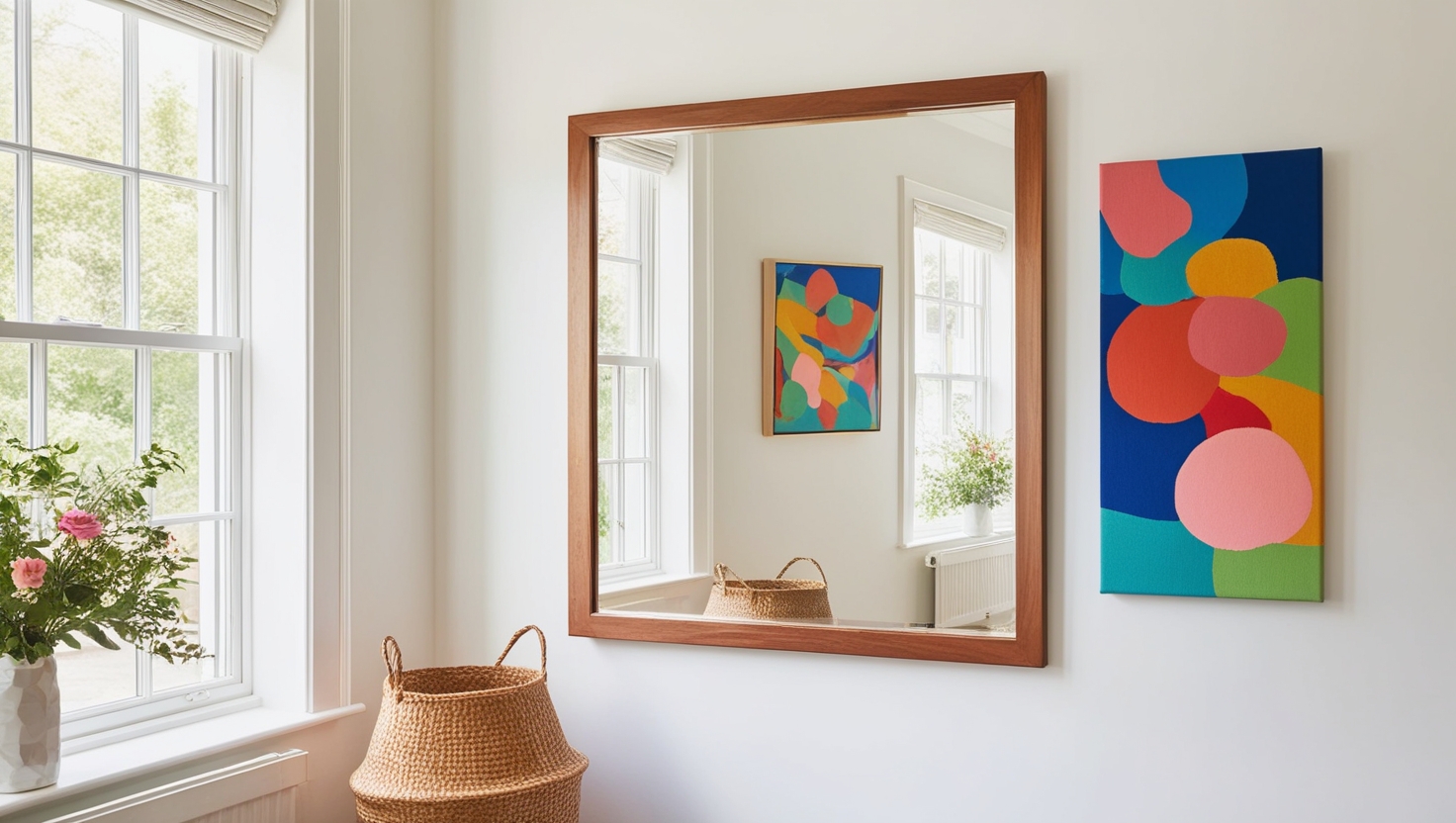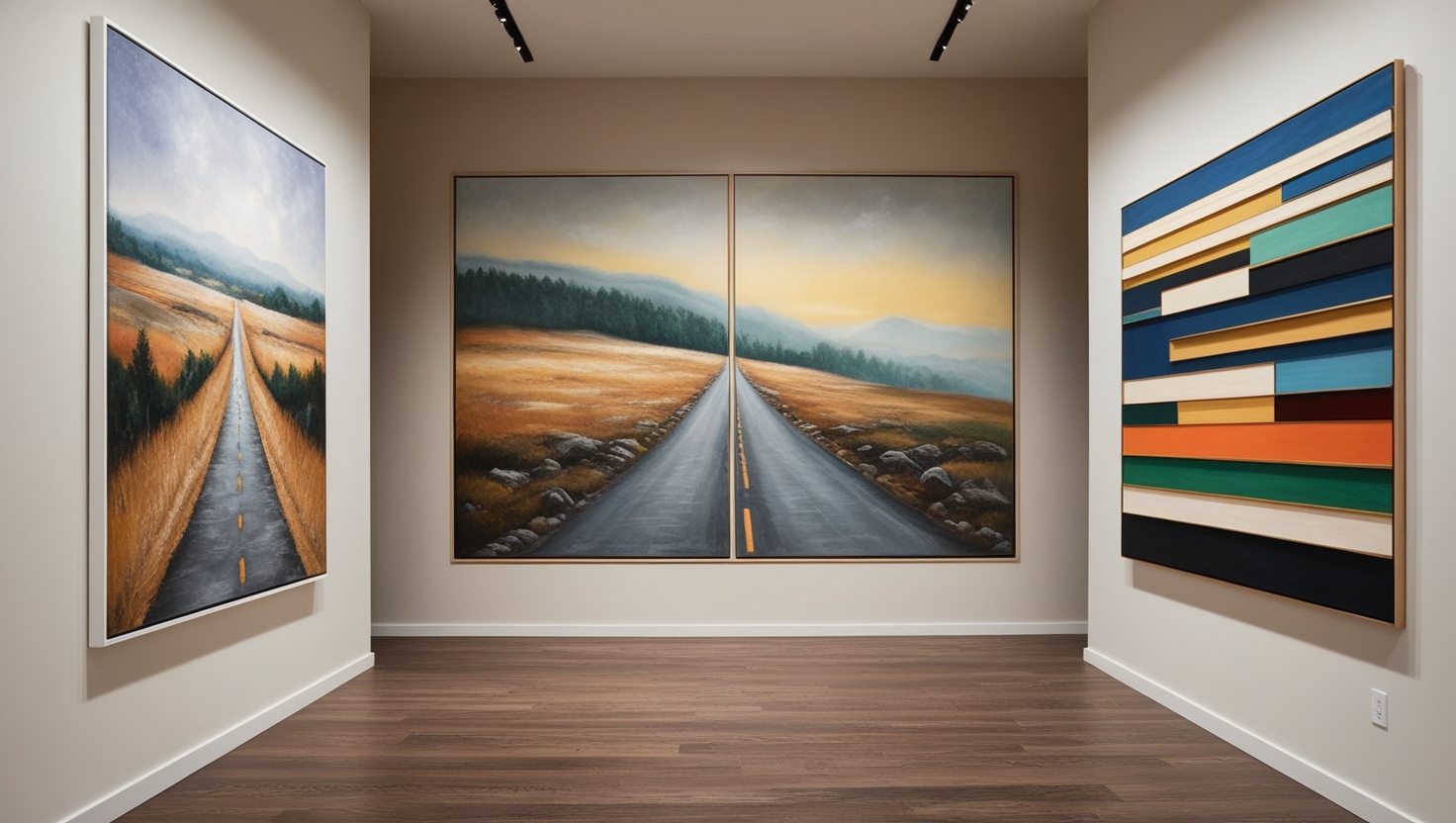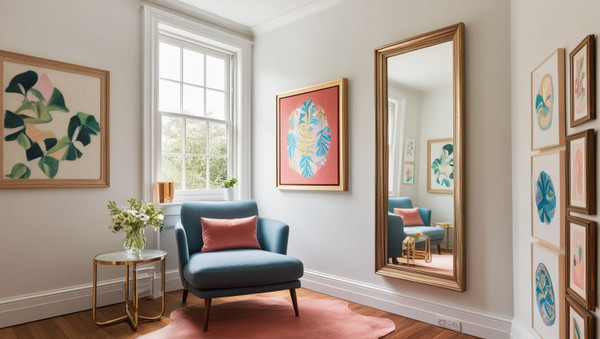Use Canvas Art to Make Small Rooms Feel Bigger
Posted by MintSuper Art on 25th Dec 2024
Canvas art is a powerful way to make small rooms feel larger. It draws the eye upward, adds dimension, and creates a sense of openness. Whether you're decorating a cozy living room or a compact bedroom, the right artwork can transform your space. Want to know how to use canvas art to visually expand your room? Discover easy tips and tricks that make your home feel bigger, brighter, and more inviting. Keep reading for expert design tips and creative ideas!
Key Takeaway
- Large artwork can create a focal point and draw the eye up.
- Lighter colors in art can make a room feel brighter and bigger.
- Minimalist decor around art helps keep the room feeling open.
Visual Tricks to Create Space With Canvas Art
Canvas art can reshape how a room feels. By strategically using perspective, scale, and colour, you can make even small spaces seem open and airy. Choose landscapes or abstract pieces with depth, and hang them slightly higher to draw the eye upward. Reflective surfaces and balanced lighting amplify the effect.
Choose Large Artwork
Credits: Benjamin Moore Paints
A small room can feel surprisingly larger with the right choice of artwork. Large canvas pieces, especially those with open landscapes or abstract designs, naturally draw attention. They guide the eye upward and outward, creating an illusion of depth and space. It’s almost like the walls stretch just a little further away when a big painting is placed thoughtfully.
When using oversized artwork, balance becomes essential. Keeping other decorations minimal allows the large piece to shine without overwhelming the room. Too many small items or busy patterns nearby can clutter the space, undoing the open feel the artwork creates. Simplicity is the key here—less is more.
Choosing artwork with lighter colors or soft tones can also help brighten the room. Bright or airy designs tend to reflect light better, adding to the sense of openness. Large artwork doesn’t just decorate; it transforms.(1)
Consider Color and Light
Colors in artwork have a way of shaping the atmosphere of a room. Light and bright colors, like soft whites or pale blues, can reflect natural light, making a small space feel airy and open. This trick works especially well in rooms that don’t get much sunlight. A painting with these hues, for example, can transform a compact dining area into a more inviting and spacious-feeling spot.
On the other hand, darker colors tend to absorb light, which can make a room feel smaller and more enclosed. While this might create a cozy vibe, it can also turn a small room into something that feels a bit like a cave. Choosing artwork with lighter tones is often a better choice for tight spaces, helping them appear larger and more welcoming.
Embrace Minimalism
Think of your small room as a blank canvas—simple and impactful. Minimal decorations allow your favorite artworks to shine. Instead of cluttering the walls with numerous pieces, choose one statement artwork to command attention. Clean, open spaces make the room feel intentional and inviting rather than overcrowded.
To enhance the space:
- Opt for one large art piece on an empty wall to create a focal point.
- Keep surfaces clean and uncluttered, letting your eyes rest and the room breathe.
- Choose only what you love, ensuring every item earns its place and adds value.
When you strip away excess decor, what remains becomes more meaningful. This minimalist approach makes your art the star while creating a space that feels bigger, calmer, and more welcoming—for both you and your guests. (2)
Use Mirrors Strategically

Mirrors are more than functional—they’re transformative tools for small spaces. Strategically placed, they can amplify light and create the illusion of openness, making your room feel twice as big.
To maximize their effect:
- Hang a mirror across from a window to reflect natural light and brighten the space.
- Pair mirrors with canvas art, positioning them nearby to bounce light and draw attention to your favorite pieces.
A mirror can also double as an art piece. Choose a frame that complements your existing artwork, creating a cohesive look. The mirror not only reflects light but also echoes glimpses of your art, adding depth and dimension. With just one thoughtfully placed mirror, your small room can feel brighter, livelier, and surprisingly spacious.
Scale and Proportion
Getting the size right changes everything. Think of your wall art like Goldilocks - not too big, not too small, but just right. A huge canvas above a tiny couch looks awkward, like wearing shoes three sizes too big. The key is matching your art size to your furniture scale. A good rule is to make your art about two-thirds the width of the furniture it sits above. This creates a natural, balanced look that's easy on the eyes.
Hang your art at eye level, where everyone can see it best. Most galleries hang pieces with their centers about 57 inches from the floor - that's average eye level for most adults. When you nail the sizing and placement, the whole room feels more natural. Your art should complement your space, not fight with it. Let the size of your wall guide you: larger walls can handle bigger pieces or groupings, while smaller walls need more modest-sized art.
Create Depth and Perspective

Smart art choices can make your walls feel like windows into bigger spaces. Landscape paintings with long roads or paths that stretch into the distance pull your eye deeper into the scene. Even abstract pieces that layer shapes and colors can create this same illusion of depth. It's like adding an extra dimension to your room without knocking down any walls.
When art gives your eyes somewhere to travel, it breaks through the limits of your four walls. Think of it as a magic window - even in the smallest room, the right piece can open up whole new worlds. Whether it's a misty mountain scene or a piece with overlapping shapes, art with depth turns flat walls into portals of possibility.
FAQ
How do abstract paintings and large canvas prints create the illusion of more space in small rooms?
Large canvas prints featuring abstract art can expand your space visually. When you position abstract paintings strategically, their flowing forms and clean lines draw the eye upwards and outward, making the room feel more expansive. The lack of defined boundaries in abstract pieces creates the illusion of depth beyond your walls.
What's the best way to use color palette and light colors to make a living room appear larger?
Light and bright colors reflect more light, instantly making the room feel bigger. Choose a light and neutral base for your art pieces, incorporating subtle pops of color that add visual interest without overwhelming the space. This approach helps create an illusion of a larger area while maintaining a cohesive look.(3)
How should you consider eye level and focal point when hanging art to expand the room?
Position your artwork at eye level to draw the eye naturally through the living spaces. Create a strong focal point with a large piece that serves as an anchor, then arrange smaller art pieces around it. This technique adds depth while making the room feel more spacious by directing visual flow.
When planning a gallery wall, what easy tips help maximize the feeling of space?
Start with larger art pieces as anchors, then mix in smaller art prints to add personality. Keep adequate floor space visible by hanging your gallery wall higher up. Space art pieces consistently to maintain clean lines, which helps the room feel more open instead of cluttered.
How can artwork in small dining rooms help create an illusion of a larger space?
Your art collection can transform a small dining room into a larger space by drawing the eye along the large wall. Choose art that features depth-creating elements like black and white photography or pieces with strong perspective. Hang them slightly higher to add visual height to your interior design.
Conclusion
Using canvas art can really help small rooms feel larger. Large pieces, light colours, and minimal decor can all create a feeling of space. Mirrors and thoughtful arrangements can also enhance the effect. By following these tips, anyone can enjoy a more inviting and open atmosphere in their home.
References
- https://archipro.com.au/article/how-to-use-wall-ar...
- https://lumino.one/creating-illusions-how-wall-art...
- https://www.veranito.co.uk/blogs/wall-art/art-to-m...

